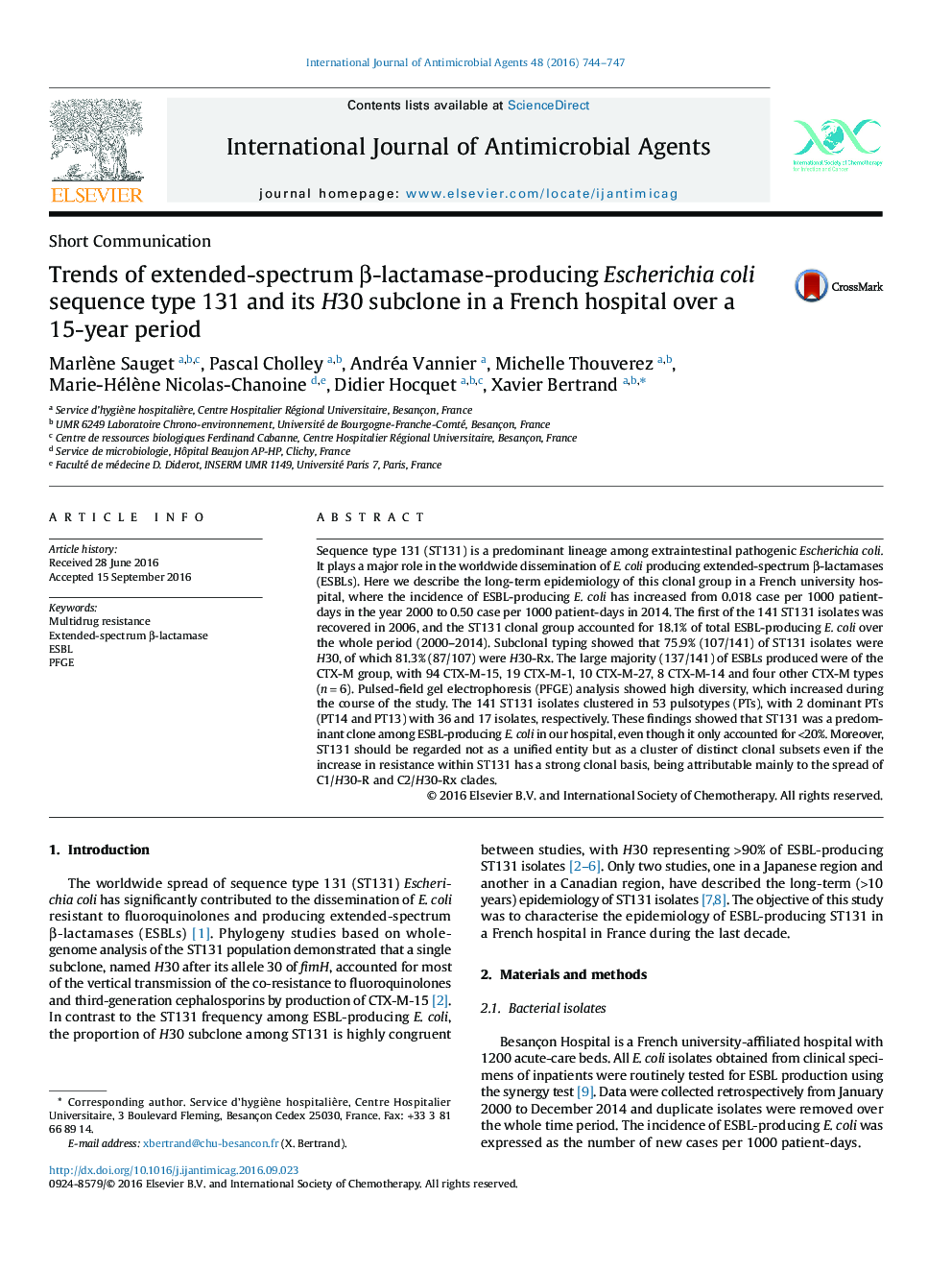| کد مقاله | کد نشریه | سال انتشار | مقاله انگلیسی | نسخه تمام متن |
|---|---|---|---|---|
| 5666872 | 1591748 | 2016 | 4 صفحه PDF | دانلود رایگان |

- ST131 is a predominant lineage among ESBL-producing Escherichia coli.
- Its epidemiology over a 15-year period in a French university hospital is described.
- ST131 appeared in 2006 and accounted for 18.1% of total ESBL-producing E. coli.
- Subclonal typing showed that 75.9% of ST131 isolates were H30, of which 81.3% were H30-Rx.
- PFGE analysis showed a high diversity, which increased in the course of the study.
Sequence type 131 (ST131) is a predominant lineage among extraintestinal pathogenic Escherichia coli. It plays a major role in the worldwide dissemination of E. coli producing extended-spectrum β-lactamases (ESBLs). Here we describe the long-term epidemiology of this clonal group in a French university hospital, where the incidence of ESBL-producing E. coli has increased from 0.018 case per 1000 patient-days in the year 2000 to 0.50 case per 1000 patient-days in 2014. The first of the 141 ST131 isolates was recovered in 2006, and the ST131 clonal group accounted for 18.1% of total ESBL-producing E. coli over the whole period (2000-2014). Subclonal typing showed that 75.9% (107/141) of ST131 isolates were H30, of which 81.3% (87/107) were H30-Rx. The large majority (137/141) of ESBLs produced were of the CTX-M group, with 94 CTX-M-15, 19 CTX-M-1, 10 CTX-M-27, 8 CTX-M-14 and four other CTX-M types (nâ=â6). Pulsed-field gel electrophoresis (PFGE) analysis showed high diversity, which increased during the course of the study. The 141 ST131 isolates clustered in 53 pulsotypes (PTs), with 2 dominant PTs (PT14 and PT13) with 36 and 17 isolates, respectively. These findings showed that ST131 was a predominant clone among ESBL-producing E. coli in our hospital, even though it only accounted for <20%. Moreover, ST131 should be regarded not as a unified entity but as a cluster of distinct clonal subsets even if the increase in resistance within ST131 has a strong clonal basis, being attributable mainly to the spread of C1/H30-R and C2/H30-Rx clades.
Journal: International Journal of Antimicrobial Agents - Volume 48, Issue 6, December 2016, Pages 744-747